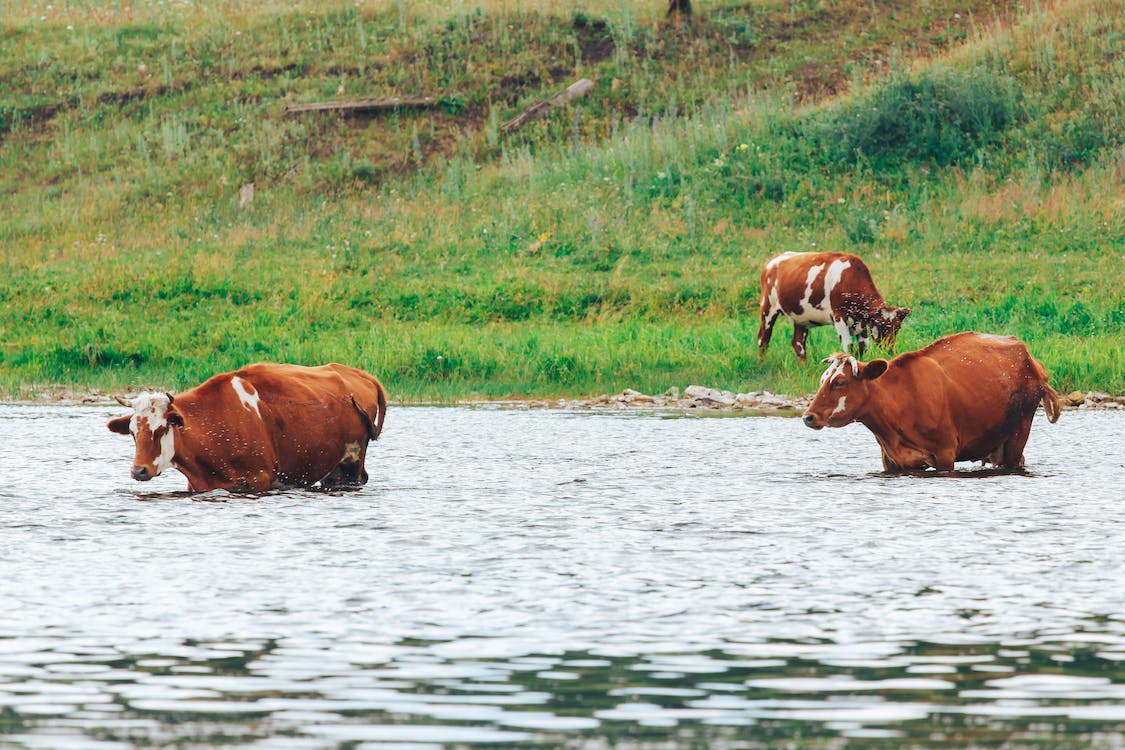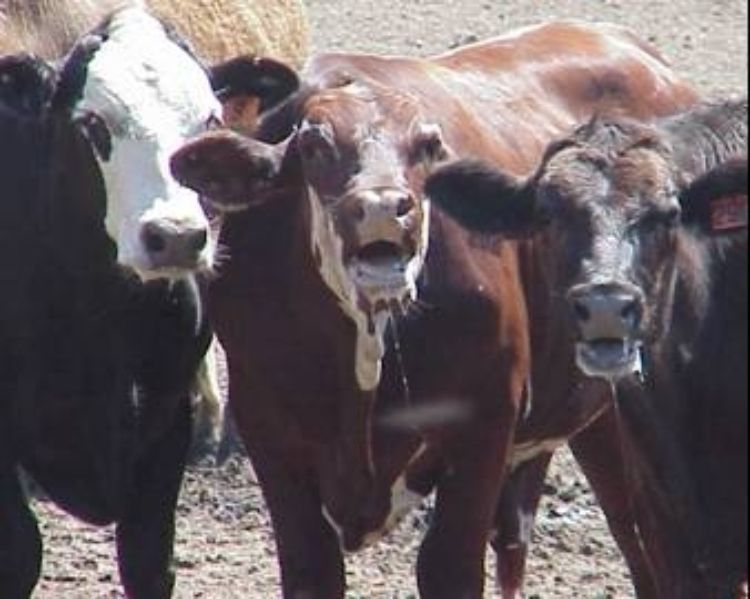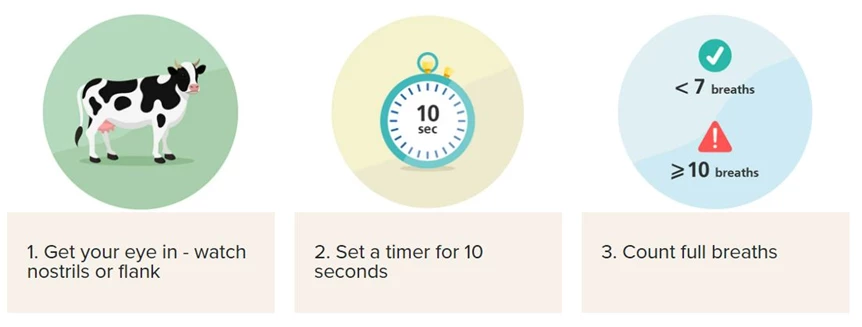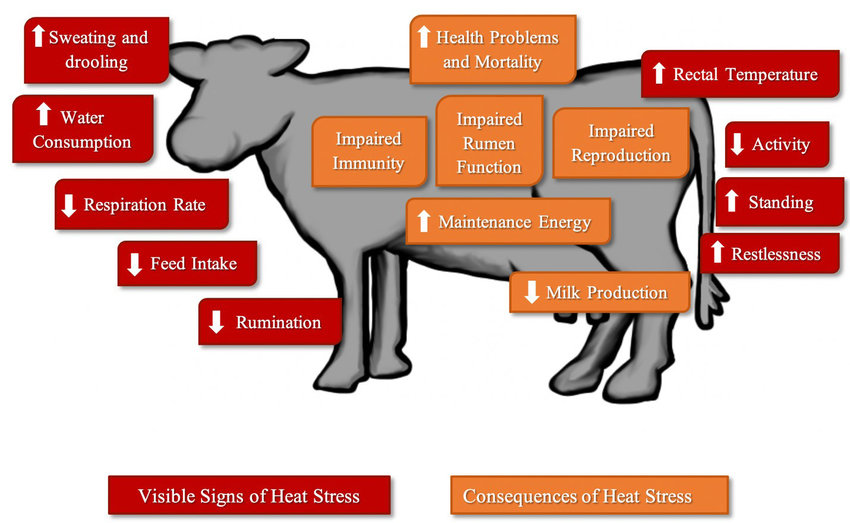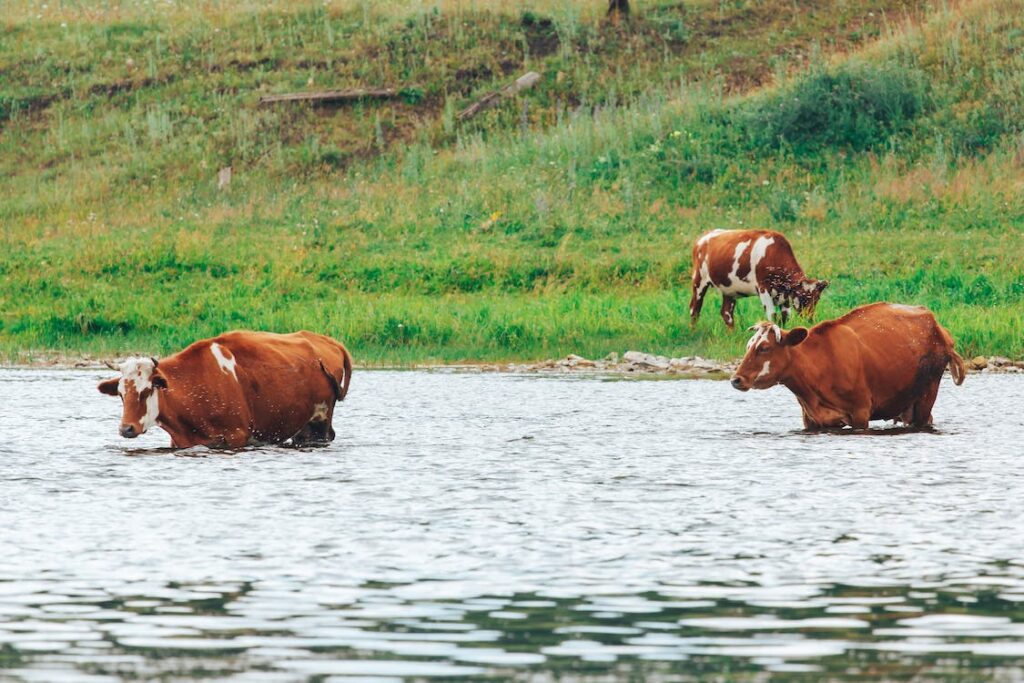What is Heat Stress?
Extreme heat temperatures in summer can cause significant stress on livestock. Excessive Heat Load (EHL) is the situation where animals are not able to dissipate body heat effectively and their body temperature rises above normal. Compared to other animals, cattle cannot sweat very effectively to cool themselves. The fermentation process within cattle’s rumen also generates additional heat that cattle need to dissipate. Since cattle cannot effectively dissipate heat during the day, they accumulate heat load during the day and dissipate this heat overnight when it is cooler. During an extreme heat wave, temperatures may not cool down at night resulting in cattle not being able to dissipate heat causing them to become stressed.
How Susceptible is My Herd?
Cattle owners must be aware of how susceptible their animals are to heat stress. Bos Indicus breeds are more tolerant to heat such as Brahmans compared to Bos Taurus breeds such as Angus and Holsteins. Bos Indicus breeds have adaptations which assist with dissipating heat more effectively such as their large ears. Cattle that are heavier are more vulnerable to heat stress due to their higher fat percentage prevents the animal from regulating their heat effectively. Typically, darker coated cattle are more susceptible to overheating and possible death during high temperature events than other hide colours. The ideal temperature for cattle is between 5-25 degrees Celsius. Multiple days over 25 degrees particularly for high producing dairy cows, can start to lead to heat stress.
Typically, grazing cattle are not as susceptible to heat stress as lot fed cattle. This is due to grazing cattle usually having the ability to seek shade, water and air movement which all contribute to them being able to lower their EHL. Owners must be prepared by looking at the forecast and planning ahead, especially those who are feedlot operators or have a lack of shelter in their paddocks.
Symptoms of Heat Stress
Signs of heat stress can be ranked in stages:
- Elevated breathing rate, restless, spend increase time standing
- Elevated breathing rate, slight drooling, most animals are standing and restless
- Elevated breathing rate, excessive drooling or foaming, most animals are standing and restless, animals may group together
- Elevated breathing rate, open mouth breathing, possible drooling, mostly animals standing, animals may group together
- Elevated breathing with pushing from flanks, open mouth breathing, tongue protruding, possible drooling, most animals standing restless
- Open mouth breathing with tongue protruding, breathing is laboured, and respiration rate may decrease, cattle push from flanks while breathing, head down, not necessarily drooling, individual animals may be isolated from the herd
The earliest indicator of heat stress is breathing rate.
Planning Ahead
Things to consider when an extreme heat event is approaching:
Avoid handling, transporting, moving, or processing cattle
Managing cattle in high temperatures requires good forward planning. Owners should avoid any unnecessary handling, yarding or transport during hot weather, especially if stock are showing signs of stress. An example of this is, if cattle must be handled on a day of extreme heat, work them in the early hours of the morning and practice low-stress handling techniques.
Provide additional water
Cattle should always have access to plenty of water. However, water requirements of cattle increase during heat stress. Like most animals, cattle lose water from increased respiration, therefore water consumption will be greater than normal. For cattle, the consumption of water is the quickest method for them to reduce their core body temperature.
Important things to consider if choosing to use spray cooling
If this is not executed correctly, spray cooling can have adverse effects on cattle heat stress. Spray cooling adds water into the pen environment via sprinklers, increasing relative humidity. When there is low wind speed, this local increase in relative humidity becomes significant and will cause additional heat loading on the livestock by reducing the efficiency of cattle to dissipate heat.
To find out more, head to MLA Cooling Water For Lot-Fed Cattle.
Observe cattle for unusual behaviour
During heat waves it is important for cattle owners to be vigilant. Stock must be regularly checked for heat stroke symptoms during a heat wave event and a plan must be put in place in case of an emergency. Owners should be looking for the symptoms stated earlier in the factsheet.
Provide shade
Shade has been shown to lessen the physiologic response of cattle to heat stress. It has been shown that shaded cattle exhibit lower respiration rates, body temperatures, and panting scores compared to unshaded cattle in weather that increases the risk of heat stress. Shade can be provided by trees and shrubs or providing access to open buildings such as sheds.
Provide adequate ventilation
Increased air flow can help cattle cope with extreme heat events by reducing their internal temperature. Although we cannot influence wind speed, places like feedlots can increase the ability for cattle to be exposed to air movement. For 1 or 2 cattle experiencing extreme heat stress, consider the use of fans for ventilation together with sprinklers.
Betaine
Betaine (trimethylglycine) is a naturally occurring extract from sugar beet that is often used by the ruminant feed industry in Australia as a Summer feed additive. Addition of betaine to the diet of animals can increase their resilience to heat through:
- Assisting to maintain cellular fluid balance and therefore reducing the base heat production and maintenance requirements of cows.
- Assisting animals to recover from periods of heat stress.
- Assisting in essential amino acid cycles within the cow that may help to optimise reproduction outcomes.
Effects of Heat Stress
- Reduced feed intake = decrease in livestock production
- Decreased milk production
- Increased susceptibility to other diseases
- Changes in behaviour
- In severe cases death
It is important producers put practices in place to prevent heat stress and to know what to do when animals are suffering from heat stress.
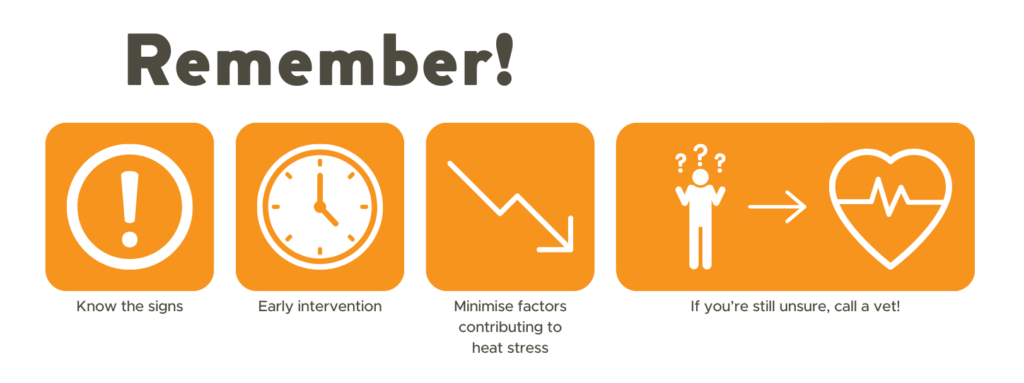
Further Resources
Click here to download a PDF version.
For further information, please contact the VFF Stock Sense team on 1300 882 833 or by email [email protected]
